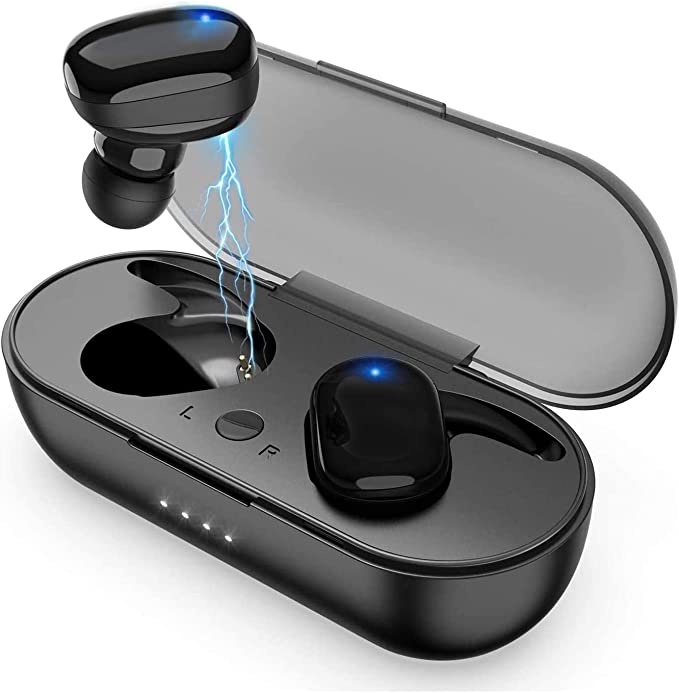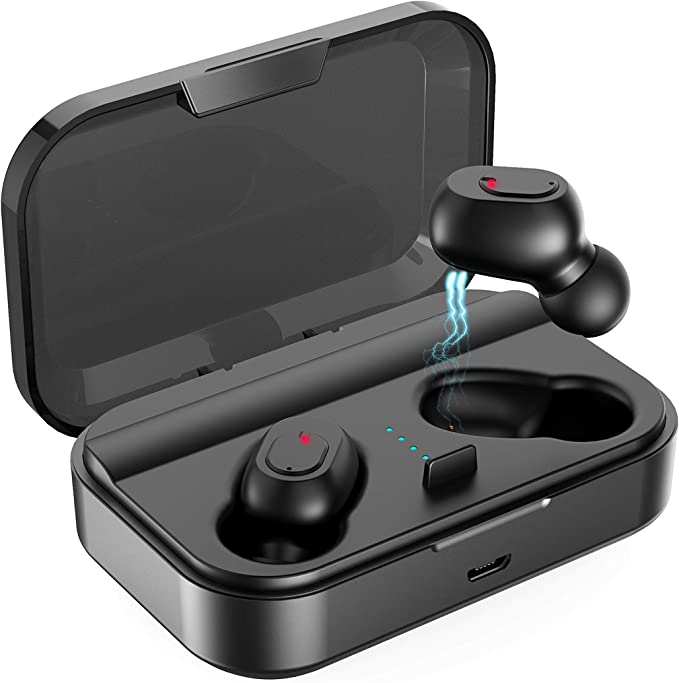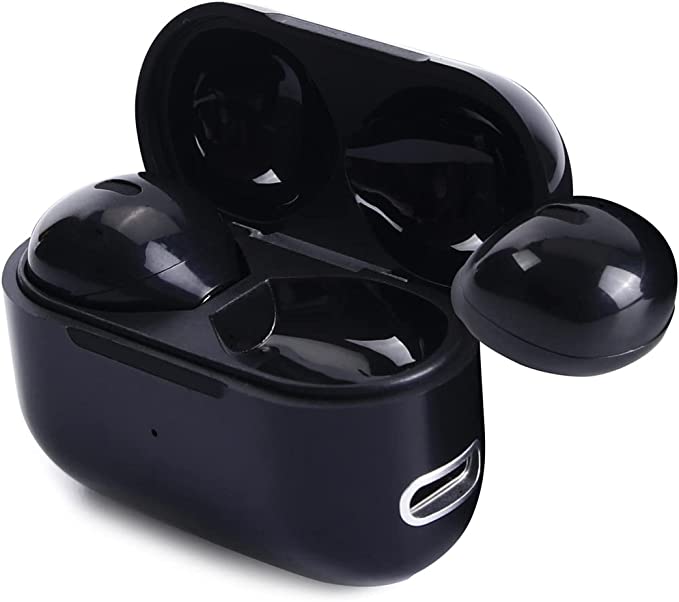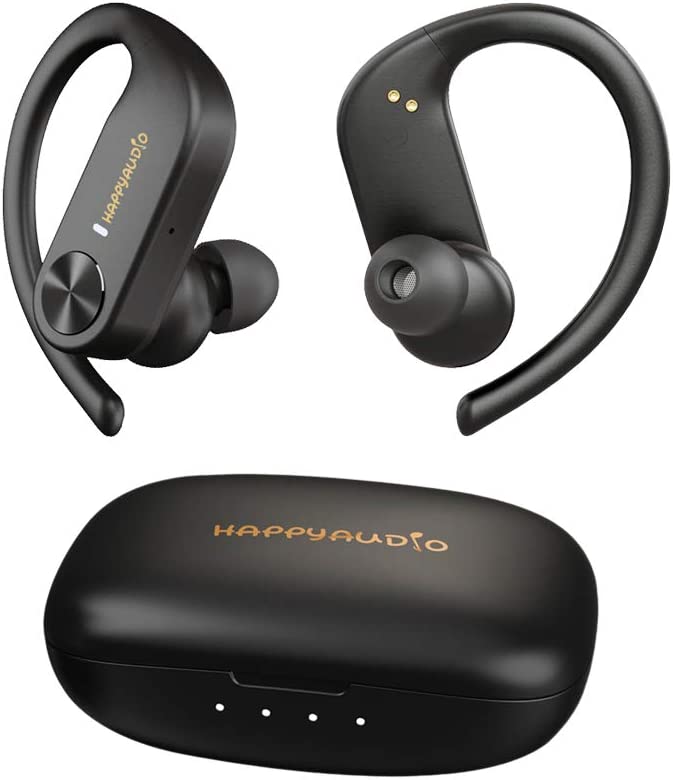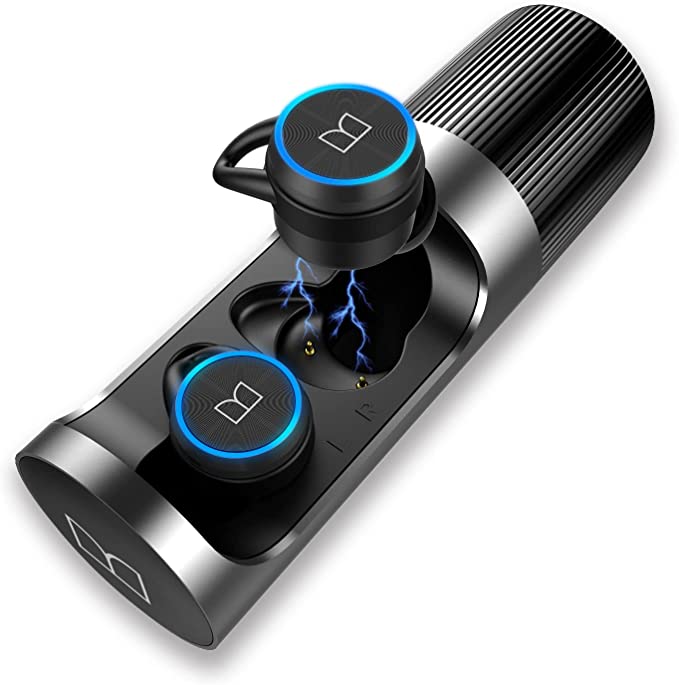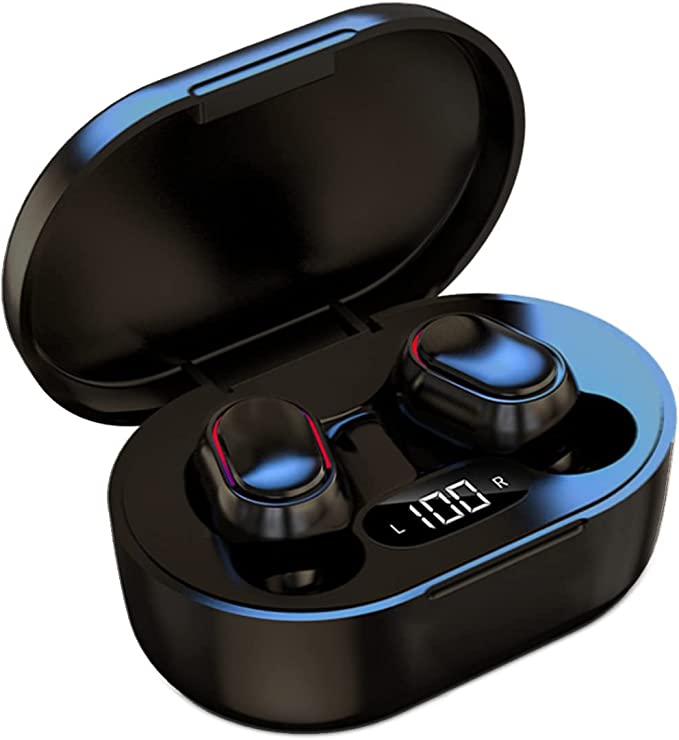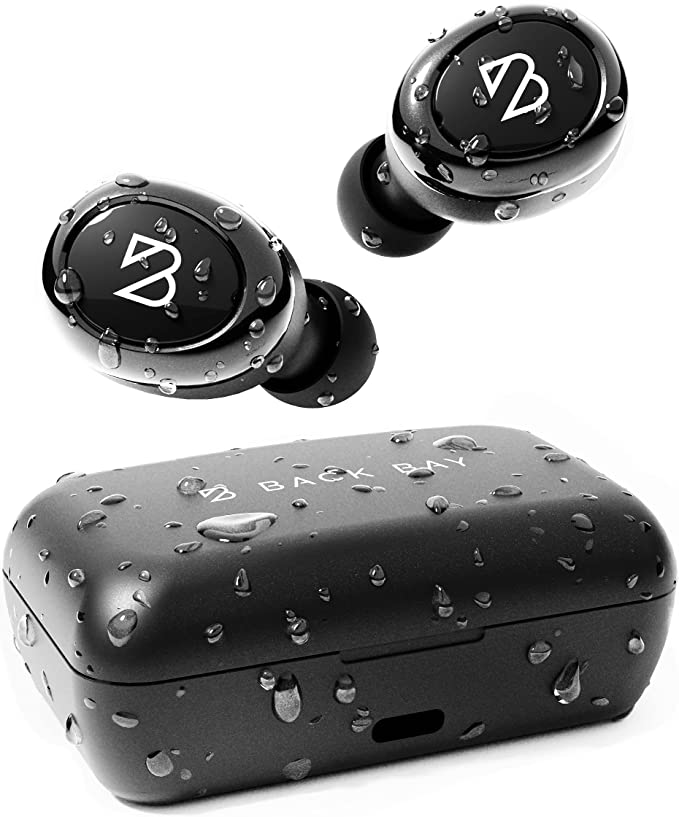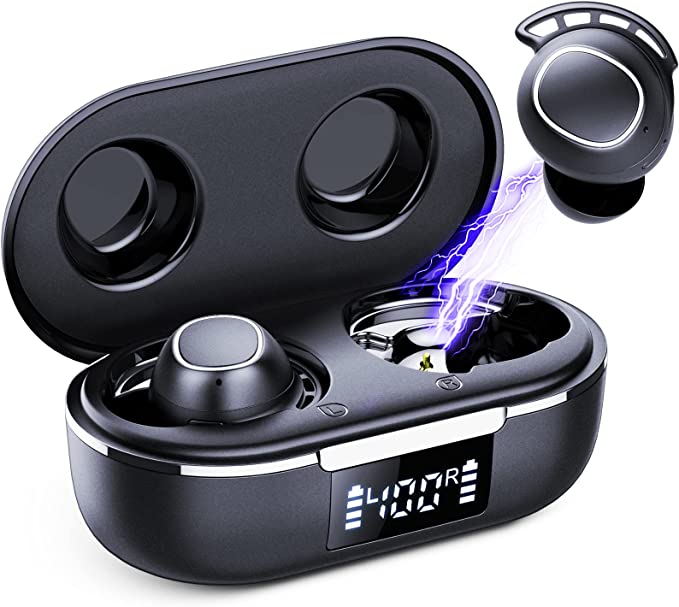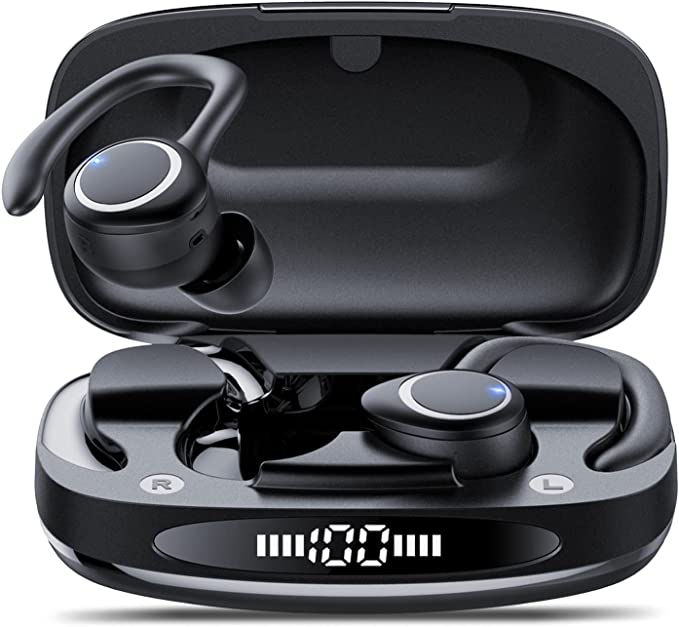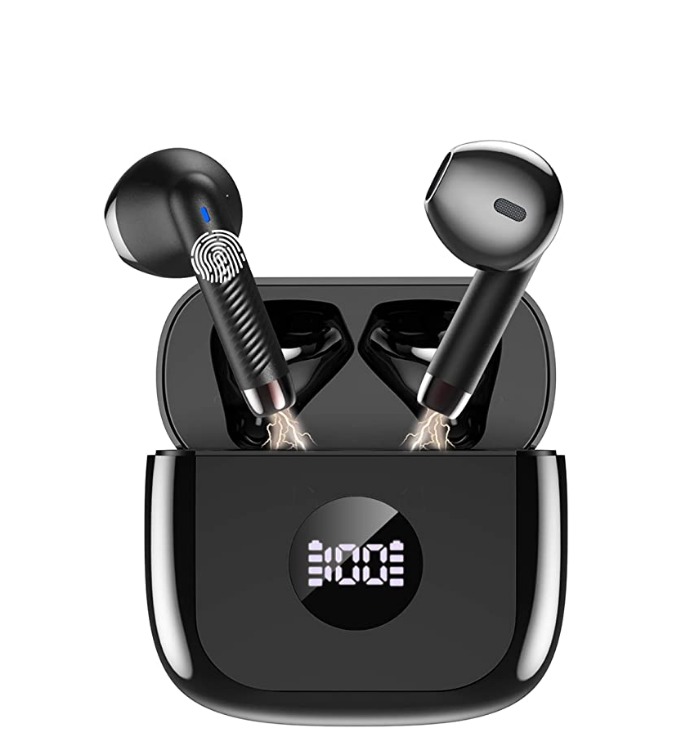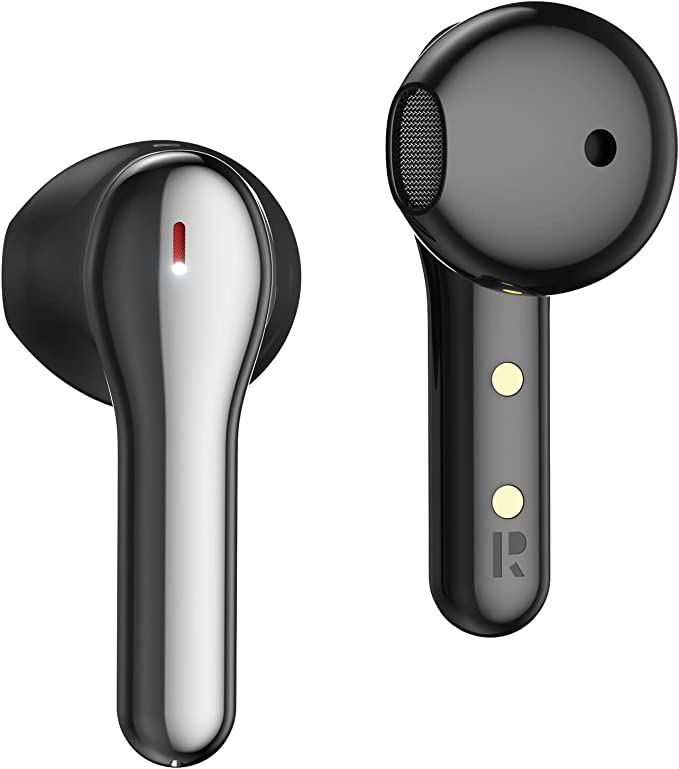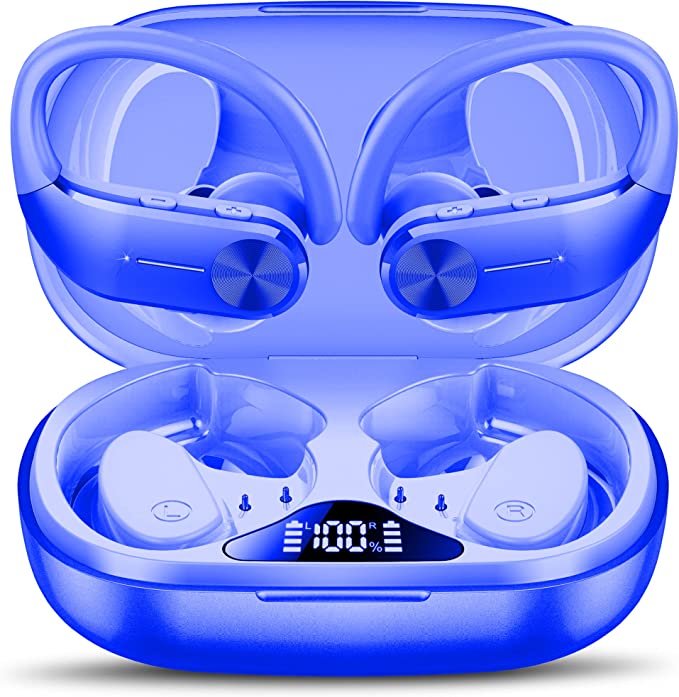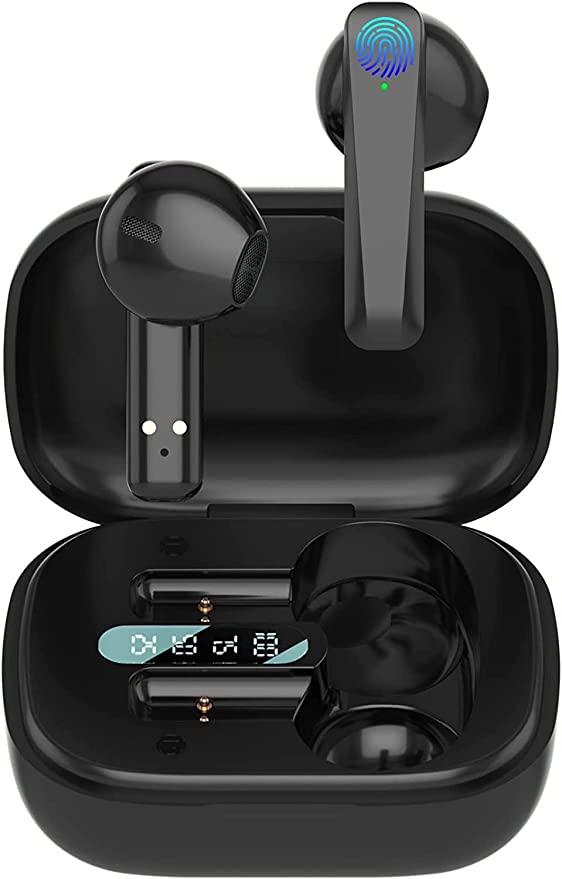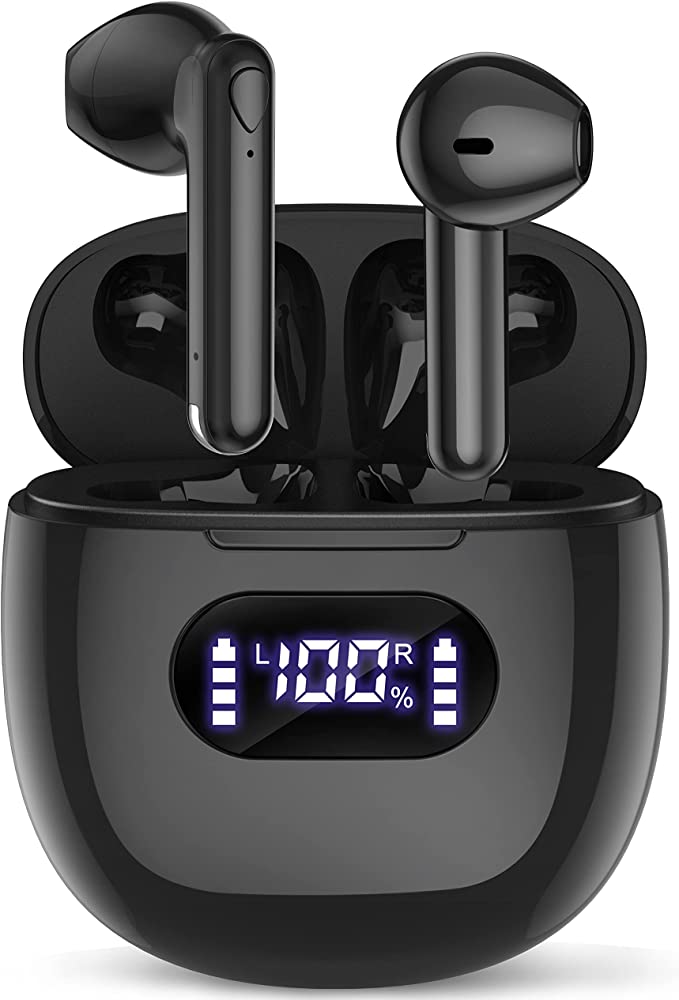Genesis Services EAR BUDS MD188: Unpacking the Science of Wireless Audio, Durability, and Convenience
Update on May 14, 2025, 1:59 p.m.
Our lives are increasingly scored by a personal soundtrack. Whether navigating the urban sprawl, finding focus in a bustling café, or pushing through that last mile on a run, wireless earbuds have morphed from a niche gadget into an everyday necessity for many. They are our portals to music, podcasts, and connection – tiny technological marvels nestled in our ears. The Genesis Services EAR BUDS MD188, with its suite of declared features, offers us a perfect opportunity not to review a product, but to journey through the fascinating science that makes such compact audio companions possible. So, what intricate dance of physics and engineering allows these diminutive devices to deliver our world of sound so seamlessly and resiliently?

The Invisible Handshake: Mastering Wireless Freedom with Bluetooth 5.0 and Instantaneous Pairing
The very essence of “wireless” earbuds hinges on their ability to communicate without tethers, and this is where technologies like Bluetooth 5.0 truly shine, aiming to make the connection itself almost an afterthought for the user.
The Symphony of Connection: Why Bluetooth 5.0 Matters
When you see “Bluetooth 5.0” listed as a feature, as with the MD188 earbuds, it’s more than just a version number. It represents a significant leap in wireless personal area network technology, meticulously honed by the Bluetooth Special Interest Group (SIG). For the listener, this translates into tangible benefits. One of the hallmarks of Bluetooth 5.0 is its enhanced Low Energy (LE) protocol. Imagine your earbuds as highly efficient messengers; Bluetooth LE allows them to transmit rich audio information while sipping power, contributing directly to the “ultra-low power consumption” that helps extend your listening sessions. This means more playlists, more podcast episodes, and more calls between charges.
Furthermore, Bluetooth 5.0 offers the potential for up to twice the data transfer speed and four times the range compared to some earlier iterations like Bluetooth 4.2 LE (under ideal conditions, of course). While maximum range isn’t always the primary concern for earbuds tethered to a nearby phone, the increased data throughput is crucial for achieving that coveted “low latency play sync.” Latency, in this context, is the slight delay between when a sound is initiated on your device and when you actually hear it. High latency can be particularly jarring when watching videos, leading to that annoying out-of-sync effect between lip movements and dialogue. Bluetooth 5.0’s architecture helps minimize this, making for a smoother, more immersive audiovisual experience.

It’s a quiet evolution. Few might know that the Bluetooth name itself is a nod to Harald “Bluetooth” Gormsson, a 10th-century Danish king famed for uniting warring Scandinavian tribes. Similarly, Bluetooth technology was conceived to unite disparate devices under a single wireless standard. With version 5.0, that union feels more robust and efficient than ever, akin to upgrading from a winding country road to a multi-lane, high-speed expressway for your audio data, ensuring a smoother, less congested journey to your ears.
The “Open Sesame” Magic: The Hall Switch and Breathing Light
The initial joy of wireless audio can quickly be dampened by clunky pairing processes. Modern earbuds, including the MD188, often employ a beautifully simple solution: the Hall switch. Named after the Hall effect – a fascinating piece of physics where a magnetic field influences an electrical conductor – these tiny sensors detect the magnetic field of the charging case lid.
Think of it like an invisible butler. The first time you pair your earbuds, it’s like a formal introduction and handshake with your phone or other device. After that, the Hall switch takes over. When you open the case lid, the sensor detects this change, signaling the earbuds to power on and instantly reconnect to their known companion. This “open the lid and pair immediately” functionality transforms the experience from a chore into a moment of minor magic. The MD188’s “breathing light design” often serves as a visual confirmation of this readiness, a subtle pulse indicating your audio world is just a moment away. It’s the technological equivalent of a familiar friend nodding hello, no reintroductions needed.

The Soul of the Sound: Deconstructing Audio Fidelity with the 10mm Driver and Ergonomic Design
Connectivity is crucial, but the ultimate purpose of any earbud is to deliver sound that delights, moves, or informs. This responsibility largely falls upon the speaker driver, a marvel of miniature engineering.
The Miniature Maestro: Understanding the 10mm Speaker Unit
The Genesis MD188 earbuds state they use a “professional 10mm speaker unit.” But what exactly is a driver, and why does its size matter? At its core, a dynamic speaker driver – the most common type in earbuds – is a transducer. It converts electrical audio signals sent from your device into the physical sound waves your ears can interpret. Imagine a miniaturized version of a traditional loudspeaker: it typically consists of a diaphragm (a thin, flexible membrane), a voice coil (a coil of wire attached to the diaphragm), and a magnet. When the electrical audio current flows through the voice coil, it creates a fluctuating magnetic field that interacts with the permanent magnet, causing the voice coil and the attached diaphragm to vibrate rapidly. These vibrations displace air, creating pressure waves – sound!
The “10mm” refers to the diameter of this diaphragm. In the realm of in-ear headphones, a 10mm driver is a respectable size. Generally, a larger diaphragm has the potential to move more air. This can be particularly advantageous for reproducing lower frequencies, contributing to that “powerful bass performance” mentioned in the product’s description. It’s like the difference between a small hand drum and a larger bass drum; the latter, with its larger surface, can produce deeper, more resonant tones. Of course, driver size is just one piece of the puzzle; the diaphragm’s material, its rigidity, the magnet’s strength, and the acoustic design of the earbud housing all play critical roles in shaping the final “truly natural authentic sound.” The goal is an audio reproduction that feels balanced and true to the original recording.
Comfort Meets Clarity: The Role of Ergonomics and Passive Noise Isolation
Sound quality isn’t just about the driver; it’s also profoundly affected by how the earbud interacts with your ear. The MD188 highlights its “i5-in-ear ergonomic design,” emphasizing that it’s “comfortable to wear.” Good ergonomics in an earbud serve two key functions. Firstly, comfort: an earbud designed to follow the natural contours of the ear can be worn for extended periods without causing pressure points or fatigue. This is vital for those long playlists or back-to-back calls.
Secondly, and crucially for audio fidelity, a snug and proper fit creates an acoustic seal. This seal is the foundation of passive noise isolation. By physically blocking some of the ambient sounds from the outside world – the drone of an office, the rumble of a train – the earbuds help create a cleaner canvas for your audio. This means you can often listen at lower, safer volumes and still perceive the full detail and nuance of your music or podcast. It’s like closing a window to a noisy street; the sounds from inside become instantly clearer.
Addressing the “Noise Cancelling” Conundrum
The term “noise cancelling” is frequently encountered with headphones, and the product title for the MD188 includes “Bluetooth Noise Cancelling” and “ANC Airpods.” It’s important here to distinguish between the passive noise isolation we just discussed (achieved through physical design and fit) and Active Noise Cancellation (ANC), which is an electronic process.
As established, the MD188’s ergonomic in-ear design contributes to passive noise isolation. Active Noise Cancellation, if present and effective, goes a step further. ANC systems use tiny microphones built into the earbuds to capture external ambient sounds. An internal processor then analyzes these sound waves and generates an opposing “anti-sound” wave – identical in amplitude but with an inverted phase. When the original ambient sound wave and this new anti-sound wave meet in your ear canal, they effectively cancel each other out through a principle called destructive interference. It’s a sophisticated bit of acoustic wizardry designed to significantly reduce persistent, low-frequency noises like engine hums or air conditioning drones.
While the product title for the MD188 makes these ANC claims, it’s worth noting that the detailed “About this item” section provided as source material does not elaborate on a specific active noise-cancelling mechanism or its performance for this particular model. Therefore, while we can appreciate the science of ANC as a remarkable technology, users of the MD188 would primarily experience the benefits of its passive noise isolation due to the in-ear fit. Any additional noise reduction would depend on the specifics of an ANC system, if implemented.

Forging Resilience: The Science of IPX7 Waterproofing and SweatShield Fortification
For many, earbuds are not just for quiet contemplation; they’re companions for vigorous workouts, daily commutes in unpredictable weather, or even just relaxing by the pool. This is where durability, especially against moisture, becomes paramount.
Braving the Elements: Decoding the IPX7 Rating
The Genesis MD188 earbuds are “certificated with IPX7 waterproof.” This isn’t just a marketing term; “IP” stands for Ingress Protection, and the rating system is an international standard (IEC 60529) that defines how well an electrical enclosure protects against the intrusion of foreign objects (like dust, indicated by the first digit, or ‘X’ if not rated for dust) and moisture (indicated by the second digit).
The ‘7’ in IPX7 is quite specific: it signifies that the device can withstand being submerged in water up to 1 meter (about 3.3 feet) deep for a maximum of 30 minutes. This is a significant level of protection. It means your earbuds should comfortably survive a drenching run in the rain, an accidental splash from a dropped water bottle, or even a brief, unintentional drop into a sink or puddle. It’s peace of mind, knowing your audio companions aren’t afraid of a little (or even a lot of) water. Think of it as your earbuds having the aquatic resilience of a well-sealed mini-submarine, certified for short, shallow dives.
The Unseen Guardian: Understanding “SweatShield Technology”
Beyond simple water, sweat presents a unique challenge to electronics. It’s not just water; it contains salts and acids that can be corrosive over time, potentially damaging sensitive internal components. The MD188 description mentions its “innovative SweatShield Technology” making it “immune to corrosive sweat and water.”
While the precise, proprietary details of “SweatShield Technology” aren’t laid out in the provided source material, such technologies generally aim to create a more robust barrier against moisture ingress and corrosion than standard waterproofing alone might offer. This can involve several approaches:
- Hydrophobic Nano-coatings: These are microscopically thin coatings applied to internal and/or external components. “Hydrophobic” means “water-fearing”; these coatings cause moisture to bead up and roll off rather than seeping in.
- Advanced Sealing: This could involve more intricate gaskets, specialized adhesives, or a unibody-like construction for the earbud casing to minimize potential entry points for moisture.
The goal of such technologies is to enhance the longevity and reliability of the earbuds, especially for users who frequently engage in sweaty workouts or live in humid climates. It’s an unseen guardian, working to protect the delicate electronics within.

Command at Your Fingertips: The Intuitive Grace of Touch Controls
In our increasingly streamlined technological world, physical buttons are often giving way to more integrated and aesthetically pleasing control methods. The MD188 earbuds embrace this with touch controls: “you can touch either earbud to control the phone, such as the music switch, volume adjustment, phone calls, voice assistant, etc.”
The science behind most earbud touch controls is typically capacitive touch sensing. Your body, being a pretty good electrical conductor, can store a small electrical charge. When your fingertip touches a capacitive sensor on the earbud, it changes the local electrostatic field of that sensor. Sophisticated microcontrollers detect this change in capacitance and translate it into a command – play, pause, skip track, answer call, or activate your phone’s voice assistant.
The beauty of this lies in its effortless interaction. Imagine you’re out for a jog, phone tucked away. A call comes in. A simple tap on your earbud answers it. Want to skip to the next song to match your pace? Another tap or swipe. This level of convenience means you can manage your audio and communication without breaking stride or fumbling for your device, keeping you more present in your activity. It’s this kind of thoughtful integration that makes technology feel less like a tool and more like an extension of yourself.
The Unsung Hero: The Charging Case and True Wireless Freedom
No discussion of modern wireless earbuds would be complete without acknowledging the vital role of their charging case and the very nature of their “true wireless” design.
Your Pocket Powerhouse: More Than Just a Box
The charging case provided with the MD188 earbuds serves multiple purposes. It’s a secure storage solution, protecting your earbuds when not in use. More importantly, it’s a portable “battery backup.” The earbuds themselves, designed for “ultra-low power consumption,” hold a certain amount of charge, but the case contains its own, larger battery. When you place the earbuds back in the case, they automatically begin to recharge, significantly extending your overall untethered listening time throughout the day. Some product information also lists “Wireless Charging Case” and “Charging Station” as included components for the MD188, suggesting that the case itself might be rechargeable wirelessly (likely via the common Qi standard), adding another layer of cord-free convenience to the entire system.
The Liberation of TWS (True Wireless Stereo)
The term “TWS Ear Buds” also appears in the MD188’s description. TWS stands for True Wireless Stereo. This signifies that there is no physical wire connecting the left and right earbuds to each other, nor to the audio source. Each earbud receives its own discrete stereo channel (left or right) wirelessly from the source device. This technology required solving complex synchronization challenges to ensure both earbuds play their respective audio signals in perfect harmony, delivering a coherent and immersive stereo image. The result for the user is complete freedom of movement, unencumbered by any cables, offering a truly untangled and liberating audio experience.
Finally, it’s worth noting that the provided information indicates a customer rating of “4.0 out of 5 stars” based on a single rating. While a single data point doesn’t allow for broad conclusions on user satisfaction, the underlying technologies themselves are well-established avenues for achieving a quality wireless audio experience.

The Tapestry of Technology: Hearing the Bigger Picture
As we’ve journeyed through the inner workings of features like Bluetooth 5.0, 10mm drivers, IPX7 waterproofing, touch controls, and the convenience of Hall switches and TWS technology – all attributes of the Genesis Services EAR BUDS MD188 – it becomes clear that these tiny devices are veritable symphonies of scientific ingenuity. Each technology, refined over years of research and development, plays its part in an intricate dance, aiming to deliver an audio experience that is not only high-quality and reliable but also deeply intuitive and resilient against the rigors of daily life.
It’s a quiet revolution that has happened in our pockets and ears. The complex physics of sound reproduction, the intricacies of wireless protocols, the material science behind waterproofing – all are distilled into these compact companions. Perhaps the next time you pop in your earbuds and the world fades into your chosen soundtrack, you’ll listen with a newfound appreciation for the remarkable tapestry of technology that makes that simple, personal pleasure possible. It’s a testament to human ingenuity, making the extraordinary feel wonderfully ordinary.

